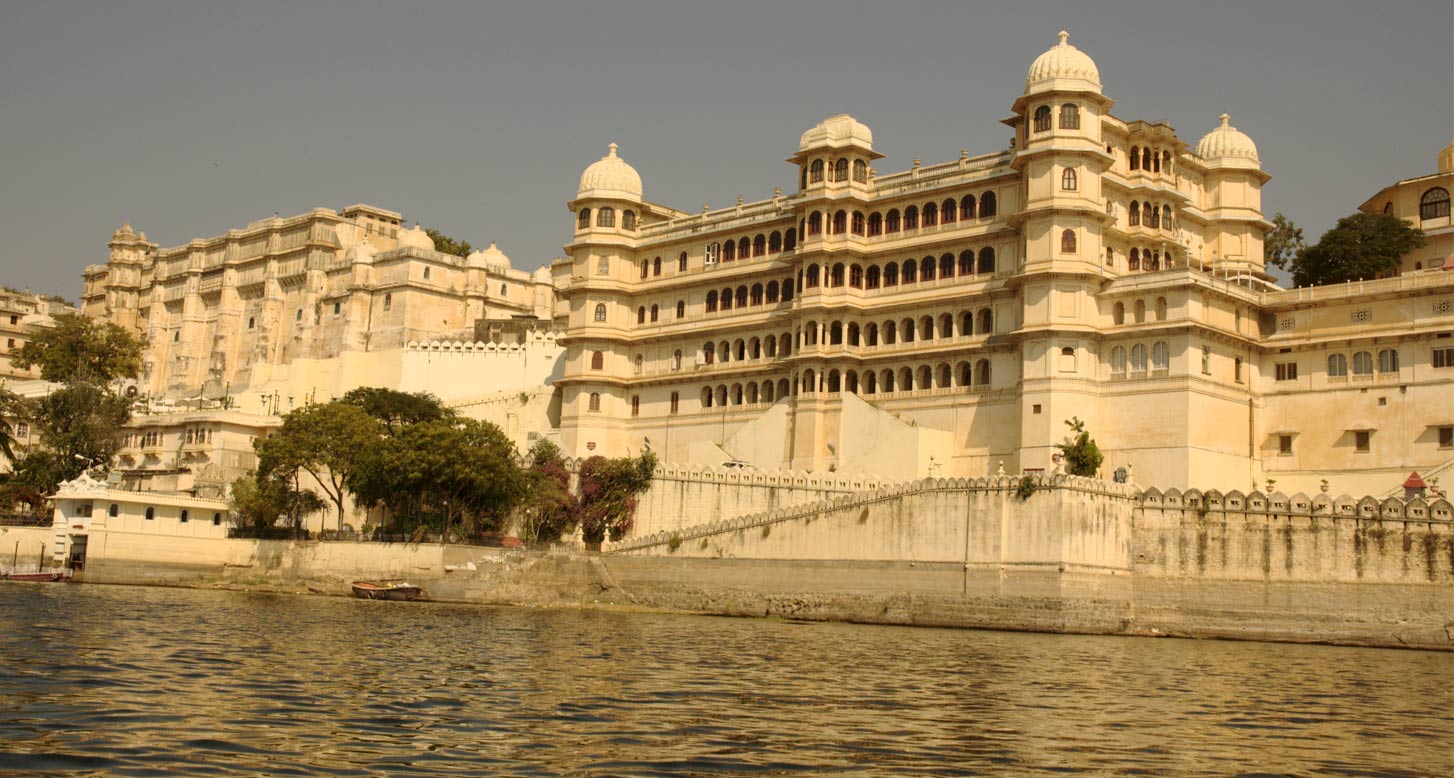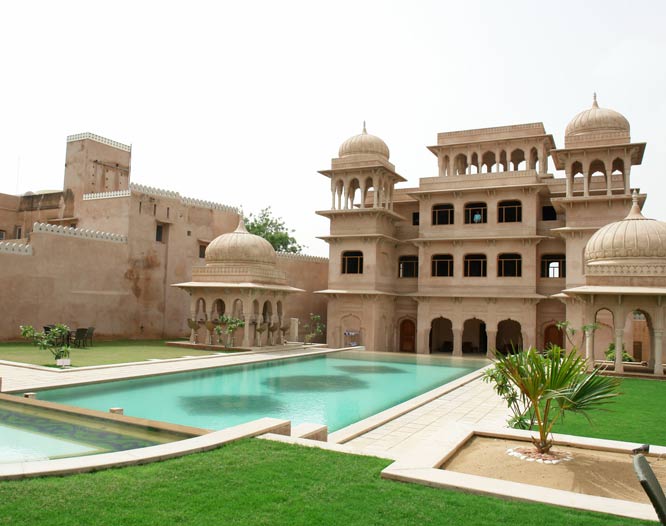
Days
Highlights: Cycle Rickshaw ride through the narrow lanes of Old Delhi.
Description: After checking in to our hotel this morning we meet our Tour Leader and discuss the week ahead. In the afternoon we head for the narrow streets of Old Delhi. Once capital of the Mughal Emperor Shah Jahan, Old Delhi is a maelstrom of colour, noise and chaos, and, using a mixture of the old and the new - the metro and a cycle rickshaw ride - we reach the Chadni Chowk Bazaar, at the heart of the Old City. A highlight of Old Delhi is the Jami Masjid mosque. Built of Redstone Jama Masjid, also known as Masjid -e-Jahanuma, is the largest mosque in India. The courtyard of the mosque measures around 1000 square meters and has a capacity of 100,000 people. In the center of the courtyard is a tank and Hauz. This was built for the purpose of Wazu, compulsory ambulation done before Namaaz. In front of it is a raised platform called the Dikka. The mosque is so big that the Muatllawi (the second cleric), used to stand on the Dikka and repeat the Ayats said by the Imam (the chief cleric) to the devotees who were unable to hear him. The mosque took some 14 years to construct. From the top of the southern minaret there is a view of New Delhi, where we will explore tomorrow. Nearby is the imposing Red Fort. Built in the 1600s its imposing red sandstone walls stand over 30 meters above the heart of the Old City which swirls around it. We'll take a rickshaw ride through Chadni Chowk and have a wander through the Spice Bazaar. Be sure to have a camera ready to capture all the wonderful sights including the chaotic electrical wiring, monkeys, traders on bikes with massive loads, and the traffic in general which by some kind of sixth sense and tolerance means drivers and pedestrians seems to just miss each other.
Locations: Delhi
Highlights: Explore modern New Delhi
Description: After breakfast you spend the morning on a guided tour of the other side, the modern side, of the city. New Delhi was designed by Lutyens in the 1930s and still retains the feel of colonial India. We'll see the Parliament buildings, India Gate, the Rajpath, and the Qutub Minar as well as visiting Humayan's Tomb, a precursor of the Taj in Agra. In the evening we transfer to the railway station for the overnight sleeper train journey to Udaipur.
Locations: Delhi
Highlights: The City of Lakes
Description: Arriving in Udaipur in the early morning we transfer to our hotel, with time to freshen up and have breakfast. Then we set out on a full day's exploration of Udaipur. The city is perhaps best known for the beauty of Lake Pichola, with its Lake Palace Hotel on a small island in the lake; here too is Jag Mandir island. Our walking tour of the city takes us to the City Palace complex and the Jagdish Mandir before we spend time exploring the bustling bazaar. In the afternoon it is often possible to arrange an optional boat ride, or sunset cruise, on Lake Pichola.
Locations: Udaipur
Highlights: Visit Eklingji and Nathwada temple
Description: On our second day in Udaipur there is the chance to visit Eklingi and Nathwada temple on an optional excursion, or to venture out of the city on foot or by bike to visit some of the villages in the surrounding area. The small villages of rural India provide a startling contrast to the bustle of Udaipur city.
Locations: Udaipur
Highlights: Ranakpur is famous for the numerous Jain temples here, dating from the 1400s
Description: After breakfast we head for Ranakpur. The town is famous for the numerous Jain temples here, dating from the 1400s; they are beautifully decorated with details of the lives of Jain saints of the time. We visit the Adinath Temple, perhaps the most impressive of all, with some 1444 carved pillars, with no two being alike. We continue to Bhenswara, arriving in mid-afternoon. Bhesnwara is a typical small Indian village, and is dominated, as is so often the case in this region, by a castle. Built by Jagat Singh Ji Rathore, the founder of Bhenswara, it is some 240 years old, and built in a typical Marwari Rajput style. After checking in at our hotel we are met by several jeeps, for our safari into the desert, to visit the Rabari people, a shepherd community who are in a sense the true colours of the desert. Their brightly coloured turbans and dresses look spectacular against the dull sandy, rocky terrain whilst grazing their sheep. Their ladies are always dressed in the vibrant bright colours of their traditional costumes. We may see too a few members of the Beel tribe, who also inhabit this area. And of course the desert is home to a surprising variety of wildlife and we may well see hyena, jackal, fox, antelope, python, hare, porcupine, hedgehog, wild boar, and if we are really lucky, a glimpse of a leopard.
Locations: Bhenswara
Highlights: Mighty Mehrangarh, the muscular fort that towers over the Blue City of Jodhpur
Description: This morning we head across the desert to Jodphur. Dominated by the red sandstone fortress so typical of Rajasthani towns, the city has a wealth of temples and old buildings, and gives its name to the jodphur, the traditional riding breeches of the local horsemen. In the afternoon we visit the Meherangarh Fortress, over 100 metres above the city, offering spectacular views not only of the city below but also far across the desert plains. This is the ideal place to get our bearings before walking back down into town and plunging into the narrow streets below. Within the Fort are typical Mughul buildings - dramatic and ornate but built also with an eye to defence - this was a war-torn land in earlier times. This late afternoon there is time for an optional trip to the Bishnoi villages outside the city.
Locations: Jodhpur
Highlights: Traversing the desert landscape
Description: We spend much of the morning traversing the desert landscape until Jaiselmer comes into view. After checking in to our hotel, we have time to wander the streets of this frontier desert town.
Locations: Jaisalmer
Highlights: Explore Golden City of Thar Desert
Description: We have a full day to explore the city, and we start with a guided tour. We'll visit Gadisagar Lake and the Museum before heading for the Jaisalmer Fort. This was built in 1156 by the Rajput ruler Jaisala. About a quarter of the old city's population resides within the fort walls. The fort is entered through a forbidding series of massive gates leading to a large courtyard. The fort stands proudly, surrounded by stretches of the great Thar Desert, on Trikuta Hill, and has been the scene of many battles. We'll also visit a Jain Temple and three havelis: Salim ji ki haveli, Nathmal ji ki haveli and the Patwon ki haveli. The Salim Singh Ki Haveli was built about 300 years ago and a part of it is still occupied. Salim Singh was the prime minister when Jaisalmer was the capital of the princely state and his mansion has a beautifully arched roof with superb carved brackets in the form of Peacocks. Like other havelis in Jaisalmer, this too has tusks guarding the gateways. Patwoon Ki Haveli is one of the largest and most elaborate havelis in Jaisalmer and stands in a narrow lane. It is five storeys high and is extensively carved. It is divided into six apartments, two owned by archaeological Survey of India, two by families who operate craft-shops and two private homes. There are remnants of paintings on some of the inside walls as well as some mirror work. This is the largest Haveli in Jaisalmer, Nathmalji-ki-Haveli was constructed by the two brothers, Hathi and Lulu who were famous for their unique architectural creativity. It primarily served as the residence of Diwan Mohata Nathmal who was the Prime Minister of the place during that period. This haveli is still considered the best in Jaisalmer in terms of grandeur, and the architectural style is quite different from others in Jaisalmer. After our tour there is time to wander the narrow lanes and explore the bazaar.
Locations: Jaisalmer
Highlights: Visit to the abandoned city of Kuldhara
Description: We start our day with a visit to the abandoned city of Kuldhara, some 20 kilometers from Jaiselmer. The place stands essentially the same as it did some 200 years ago, with bats and an occasional desert fox taking over the homes and temples. The timber roofs have gone but the sandstone walls still remain, lining the deserted roads. Intact too are the wells and the city's drainage system. The inhabitants of this deserted town are thought to have been Paliwari Brahims, who, unusually for Brahims, were traders and farmers. From Kuldhara we drive on to Sodakore. After checking in our hotel we can take an optional walk into Sodakore village, just a kilometer away from our hotel. Sodakore is home to about 250 Rajput families, with their mud houses and a communal water tank which illustrates their communal approach to life. There are two schools, a government one and a private one which is supported by our hotel. If relaxation is preferable to exploring the village there is a pool at the hotel.
Locations: Jaisalmer
Highlights: Camel safari in the great Thar Desert
Description: We start our day with perhaps the highlight of our visit to Rajasthan. If Rajasthan is about anything it is about the desert, and we travel this morning in the most traditional way across the stark desert landscape on our morning camel safari. The great Thar Desert, a seemingly unending expanse of burning hot sand is spread over four Indian states; Punjab, Haryana, Gujurat and Rajasthan, as well as two states in Pakistan. With an area of some 446,000 square kilometres, its name is thought to emanate from the word 'thul', describing the sand ridges of the region. Our safari this morning allows us a glimpse into the world of the simple desert villages of rural Rajasthan and their rustic lifestyle. Our journey by camel starts right outside our hotel as we head towards the Sodakore sand dunes. After a journey of around 3 to 4 hours we stop at the dunes for lunch before leaving the dunes behind as we return to our coach and in the afternoon drive to a town which has very definite links with our morning transport, the desert town of Bikaner.
Locations: Bikaner
Highlights: Visit the 16th century Junagarh Fort.
Description: We have a full day to explore Bikaner. The town lay astride the camel caravan routes that crossed Rajasthan, and was the camel corps headquarters. Today its busy markets and the sandstone buildings make it a fascinating town to explore. This morning we visit the 16th century Junagarh Fort, with its typical Rajasthani red sandstone walls enclosing a number of Palaces. In the afternoon we visit the Jain Bhandasar Temple, before we wander the bustling narrow streets and the bazaar in the Old Town .In the afternoon we visit the Karni Mata Temple in Deshnoke, some 30 kilometers south of Bikaner. The temple is unusual in that it has a population of around 20,000 rats that are fed, protected and worshipped here. They can be seen eating from huge metal bowls containing milk, sweets and grains. To keep the rats safe from birds of prey and other predators grilles are in place over the courtyard.
Locations: Bikaner
Highlights: Home to some of the finest frescoes in the Shekhawati region of Rajasthan
Description: We spend this morning crossing the desert to the small town of Mandawa. Our route takes us via the village of Nawalgarh, home to some of the finest frescoes in the Shekhawati region of Rajasthan. There is also a large fort here, a colourful bazaar and numerous havelis with elaborate architecture. From Nawalgarh we continue the short distance to Mandawa. The town is chiefly famous for its spectacular painted houses, decorated in a distinctive way, and after checking in to our hotel we have a late afternoon guided tour of the most impressive of these houses.
Locations: Mandawa
Highlights: Rolling across the plains towards Delhi
Description: After breakfast we drive to the smalltown of Loharu, where we connect with the railway. We spend the afternoon rolling across the plains towards Delhi; as always travelling by train is like taking part in a bustling moving village, until we roll into Delhi station in the late afternoon. Time then for a last evening out in India's capital city.
Locations: Delhi
Highlights: After breakfast your tour ends.
Description: Return to onward Destination
Locations: Delhi
The Tour Includes :
- 11 nights accommodation in standard comfortable hotels and heritage hotels are mid-range; whilst not luxurious, they are clean and comfortable and all have facilities such as a bar and/or restaurant.
- 1 night in a comfortable fixed camp in the desert.
- 1 night overnight on an overnight train with sleeper.
- Included meals —13 breakfasts; 2 lunches and 3 dinners.
- Tour Leader/Staff – Globally Immersed Indian Tour Leader from Delhi back to Delhi; local guides on sightseeing tours, and drivers.
- Transport—Private Coach; Train; Jeep; Camel; Cycle rickshaw.
- Single room option — available at all night-stops except for one overnight on a train.
- International flights and taxes
- Single room supplement (if available)
- Comprehensive travel insurance (cover is compulsory)
- Meals other than included
- Gratuities and any items of a personal nature (laundry and drinks etc).



 +91 9810031654
+91 9810031654


